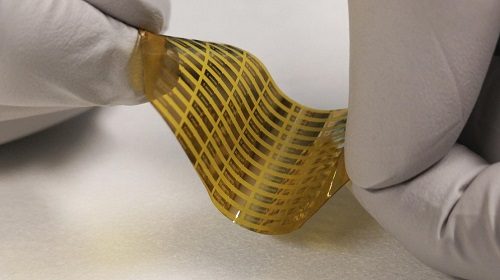The new high-energy and high-frequency pulse system aims to provide applications ranging from imaging and sensing to high-speed wireless communications.

We all like high-speed when it comes to data processing as it helps to get work done faster. With the advent of 5G, it has become possible.
Researchers at the École Polytechnique Fédérale de Lausanne (EPFL) have developed a nanodevice that operates more than 10 times faster than the fastest available semiconductor devices present today and about 100-times faster than the transistors that are present in modern computers. It is known that higher the frequency, more data can be transmitted. So, the new nanodevice is built to generate high-power terahertz waves. As most of the semiconductors present today tend to face low-power issues as the frequency of waves increases, the newly developed nanodevice does not experience any such issue.
High-penetration
In the electromagnetic spectrum, terahertz waves fall in between microwave and infrared radiations and are of the order of 1012 Hz or 1000 GHz, oscillating at frequencies of between 100 billion and 30 trillion cycles per second. As it can penetrate through paper, clothing, wood, walls and even human tissue, some people would worry about its impact on health. But scientists assure that since terahertz waves are non-ionizing in characteristic, it poses no threat to human health and can be a suitable alternative to X-rays, that are known to be ionizing.
Formation of nanoplasma
The compact nanodevice begins the generation of high-intensity waves by producing a powerful “spark,” that has voltage ranging from 10 V (or lower) to 100 V in a picosecond. A continuous generation of this spark allows transmission of up to 50 million signals per second.
Then the same voltage is applied between two metal plates that are present in the device. They are situated very close to each other (about 20 nanometers apart). The application of the voltage forces electrons to surge towards one of the plates to form a nanoplasma. Once the voltage reaches a certain threshold, the electrons are emitted instantly to the second plate. Thus, this rapid movement enabled by fast switching creates a high-intensity pulse that produces high-frequency waves. When connected to antennas, the system can produce and radiate high-power THz waves.
Scalability challenges
Technology-based on THz waves is already being used in some airports to scan passengers and detect dangerous objects and substances. So, what’s stopping a wide-scale implementation of this technology? After all, it has many advanced properties.
“Normally, it’s impossible to achieve high values for both power and frequency (at the same time),” says Elison Matioli, professor at Power and Wide-band-gap Electronics Research Laboratory (POWERlab), EPFL. “High-frequency semiconductor devices are nanoscale in size. They can only cope with a few volts before breaking out. High-power devices, meanwhile, are too big and slow to generate terahertz waves.” This implies that conventional electronic devices are only capable of switching at speeds of up to one volt per picosecond – too slow to produce high-power THz waves.
Committed to revolutionise the future of electronics
Despite the challenges presented by THz wave generation in terms of cost and convenience, the research team is hopeful that the latest innovation will find wide acceptance. “Our solution was to revisit the old field of plasma with state-of-the-art nanoscale fabrication techniques to propose a new device to get around the constraints,” says Matioli.
“These nanodevices, on one side, bring an extremely high level of simplicity and low-cost, and on the other side, show excellent performance. In addition, they can be integrated with other electronic devices such as transistors. Considering these unique properties, nanoplasma can shape a different future for the area of ultra-fast electronics”, says Mohammad Samizadeh Nikoo, PhD student at the POWERlab.
With the ability to carry vast data that could prove advantageous for faster wireless communications, the technology, which can be mounted on a chip or a flexible medium, could one day be installed in smartphones and other hand-held devices.










